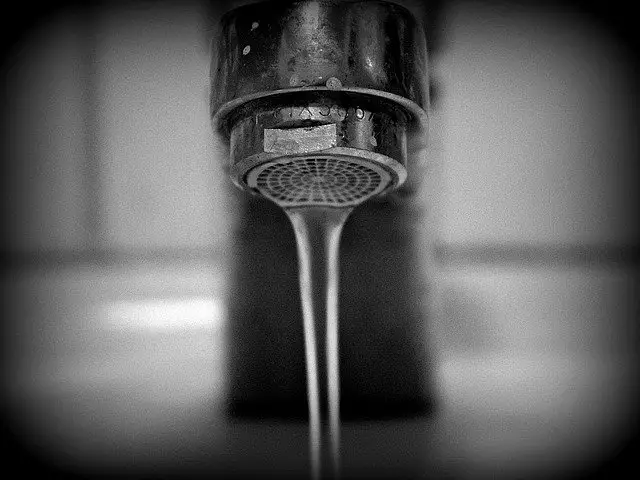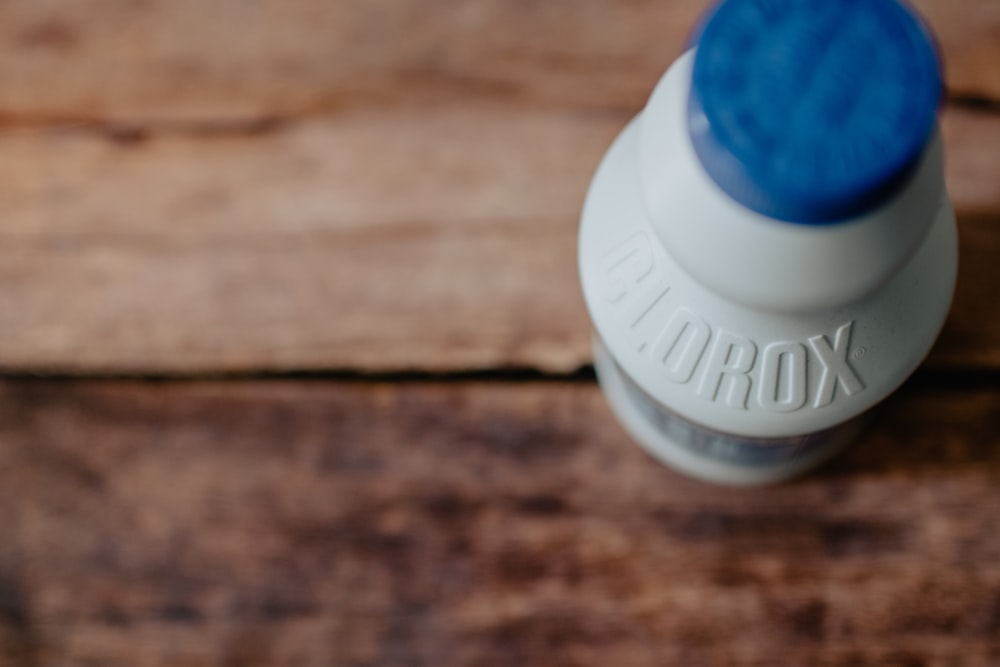Hard water in your home water system can be detrimental to your health, not to mention costly with regards to your appliances.
Groundwater is full of impurities, and when it flows through the pipes of your home, the dissolved minerals combine with heat, leaving scale and buildup that damages your pipes, appliances, and fixtures.
Why is the water in my water softener dirty? Brown water coming from your water softener is usually the result of iron and manganese build-up in your mineral tank. It can also be the result of a sediment build-up, eroding pipes, or the byproduct of flushed water mains. Another cause of brown water could be Tannins in your well water.
So what can you do to fix the problem? Once you have determined that the water softener system is the issue, you need to clean out the system to remove the rust or sediment build-up.
In this article, we will review some of the causes of brown water in your water softener as well as provide you with ways to solve the problem.
Common Causes of Brown Tap Water
Brown water streaming from a tap can be a shocking sight, but many things could be the cause.
It is most likely the result of an iron build-up somewhere in your water system. Before taking apart your water softener, it is wise to rule out other common possibilities of dirty drinking water.
Damaged Pipes
The first and most frequent cause of brown tap water is damaged or recently replaced water pipes. Pipes are prone to rust, and replacing old pipes or deteriorating pipes can cause rust to become dislodged so it can find its way into your home supply.
Brown water can also happen if there’s a drop in pressure or when the water mains are switched off and back on again.
Should brown tap water suddenly stream from the faucets, you should eliminate this possibility before replacing or tinkering with your water softener.
Although municipal piping can pose a problem, it might also be the pipes in your own home that need an upgrade.
If you suspect that your own pipes are the problem, it could be time to switch to PEX piping, a more environmentally friendly pipe system that is easy to DIY and less susceptible to corrosion.
Plumbing Corrosion
Brown tap water can also be the result of corrosion from galvanized iron plumbing. If your water softener is not the problem, check your fittings for corrosion, as this might be the cause of discolored drinking water.
Copper plumbing often has solder joints and valves made of a different alloy, which is a combination of metals with other metals or non-metals.
Every joint where different metals connect is a potential site for corrosion, another reason why it might be time to switch to PEX piping since it requires fewer joints.
What is a Water Softener and How Does it Work?
What is a Water Softener?
A water softener is a filtration system for the home that removes hard-water-causing calcium and magnesium from the water supply through a process called ion exchange.
Water softeners solve an expensive problem for homeowners that live in areas where hard water is a problem.
Hard water wreaks havoc within the modern home because hard water is water with high mineral content. Due to this, scale builds up in your pipes, clogging them, and decreasing water pressure.
Additionally, hard water dramatically shortens the lifespan of appliances like dishwashers, coffee makers, and ice machines.
Hard water also destroys hot water appliances. As the temperature of the water increases, the more calcium and magnesium will solidify and harden into solid deposits inside your water heater, which can cause significant damage.
The amount of time, work, and expense required to remedy the damaging side effects of hard water are simply not worth it. A whole-house water softener system is really the only solution to the problem of hard water.
How Does it Work?
Water softeners function by a process known as ion exchange, which eliminates any calcium or magnesium in your water.
When the hard water goes into your mineral tank, it flows through resin beads, usually made from polystyrene and which are charged by a sodium ion.
The resin beads are anions, which merely means their charge is negative. The calcium and magnesium minerals, on the other hand, have a positive charge, making them cations.
Since opposites attract, the positive charge of the resin beads attracts the negative charge of the minerals. As the hard water goes through the resin, the beads grab the mineral ions and remove them from the water.
When the bead seizes the mineral ion, the sodium ion is released. The column of resin strips all the hardness out of the water as it passes through the mineral tank, and softened water flows from your taps.
Soon enough, though, the resin is saturated with ions, and you’ll have to regenerate or flush the tank clean, and that is the job of the brine tank (source).
However, occasionally an owner of a water softener system might find that the water flowing from the taps is tinted, or they open the water softener for a routine inspection to discover that there is brown sludge coating the tanks or dirty water in the system.
What do you do when the water in your water softener is brown? The best option you have is to properly clean out the entire system to remove rust or sediment build-up.
Also, you should use a high-quality purified salt in the brine tank, and employ the use of a sediment filter and rust-proof resin cleaner.
What to Do When the Water in Your Water Softener is Brown
Although they perform a stellar service, it can be disheartening to discover that your water softener is the cause of dirty water in your home. Once you have ruled out the most common causes of brown tap water, it is time to inspect your water softener.
If the water in the softener itself is brown, there are several probable causes.
Dirt in the Brine Tank
Once a water softener has been in use for some time, a layer of dirt and grime can build up around the inside of the tank. This buildup is normal; however, if salt with too many impurities was used in the brine tank, this can cause dirty water.
Using a salt that is 99.8% soluble or clean will eliminate the need for frequent cleaning and reduce the dirt and foam buildup.
Sediment Buildup
In some water softeners, sediment buildup in the mineral tank can be the reason why your tap water is tinted brown.
But it can pose a more dire problem — sediment buildup can be the reason for a water softener to not work at all and hard water to cause unnecessary damage still by flowing into the home.
Minerals and salt in the water can build up deposits within the system. Three common blockage areas are the filter screen, the brine line, and at the base of the brine tank. The filter screen is where sediment will build up.
Should this be the problem, the mineral tank with the resin beads will need a deep clean, and you will need to clean your filter screen and perhaps even install a sediment filter before your water softener.
Iron Pollution
Given that iron is the most abundant element in the earth’s crust, iron is ubiquitous in groundwater across the world.
Due to its oxidation capabilities, iron is a prevalent water quality issue for those who own wells and the reason why so many homes experience brown or tinted water from time to time.
Over time, iron in water will also accumulate on your water softener’s resin bed, and you will have to rinse out the iron to keep the resin from getting fouled.
Iron fouling will not just turn the water brown, but it will also decrease the softener’s efficiency while restricting the flow rate.
Oxidized iron molecules are about 20 times bigger than their dissolved counterparts. As a result, they soon dwarf the resin beads and cancel out their capacity to soften water.
Fortunately, you can get rid of rust particles in your water softener easily with resin cleaners.
Cleaning a Water Softener
After you have decided that your water softener system is indeed the cause of brown water in your home, you need to hone in on where the problem lies.
Whether the issue is the brine tank, sediment buildup, or iron pollution, you need to determine which part of the water softener is causing the problem to fix it.
Each of these elements of a water softener is critical in its ability to function at an optimal level and, through proper cleaning and maintenance of each of these parts, you will ensure a longer life for your system and better quality water for your home.
Cleaning the Brine Tank
A water softener has two tanks: a mineral tank and a brine tank. The brine tank holds a salt solution which it uses to flush the mineral tank, where the resin beads are, to replace the calcium and magnesium ions with sodium.
In many cases, the brine tank is where the trouble begins with the water softener, and the cause is usually an impure quality salt used in the tank at the start.
The brine tank generally has a foamy buildup on the sides, but this can turn brown and almost like sludge if it uses impure salt. The brine tank can also build up dirty water if the salt has solidified into a solid mass, blocking the water underneath it.
In this case, break up the salt by pouring hot water over it and then removing it piece by piece. If you see brown sludge in the brine tank, it is time for a thorough cleaning.
How to Clean Your Brine Tank
To prepare for the cleaning, you will need to ensure that the brine tank is empty or nearly empty of all the salt it contained. You will also need to bypass the water softener system so that no water passes through the system during the cleaning process.
The next step is to disconnect the plastic tubing connecting the brine tank to the softener system and carry it outside to perform the cleaning process. Remove the platform or salt grid, depending on the unit, from the bottom of the tank.
Once outside, make sure that the brine valve is free of any residual salt and run it over with water to clean.
Mix 4 to 5 gallons of clean water and ¼ cup of unscented bleach, and scrub the tank thoroughly with this mixture. Once done, fill the tank with the bleach mix and let it sit for 15 minutes.
After the 15 minutes are up, discard the bleach mixture from the tank and rinse it thoroughly. Then replace the brine tank in its original location, and replace the platform or salt grid and all tubing.
Now, take the system out of the bypass and check it over carefully for any leaks. When you have made certain that everything is secure, fill the brine tank with water and purified salt to approximately 4 to 6 inches above the platform or salt grid.
By cleaning your brine tank every year and using a 99.8% soluble high-purity salt, you will keep your water softener working at peak efficiency.
The higher quality salt that you use, the less often you will need to clean the brine tank, leaving you with one less household chore to handle.
Installing a Sediment Filter
If sediment is collecting in your mineral tank and giving your water a brown tint, it might be that you don’t have a proper sediment filter, in which case it is definitely the time to install one.
A water softener has a filter screen that prevents debris from entering the resin tank as it catches it while the water is being pumped into the resin tank. Still, it is not sufficient for all sediment and other impurities.
The reason why sediment filters are so important is that you need to protect water softeners need to from dirt and debris because sediment damages the screens and injectors inside the softener’s control valve, and they will cause the system to fail prematurely.
Before installing a filter, use a phosphoric acid resin cleaner to help flush silt, heavy metals, and organic compounds out of the water softener itself.
Installing a good-quality sediment filter in your system provides integral protection to the water filtration system.
The filter also serves the purpose of preventing debris and particulate matter from appearing in your drinking water, which offers better quality water for your household.
Carbon filters installed before your water softener removes chlorine, tastes, odors, and sediment from the water, and they are entirely self-cleaning.
You can easily connect the carbon filter output to the softener input by either using a short length of PVC, a stainless steel flex line, or PEX piping.
A carbon filter might seem like an additional expense, but for the benefits it holds, it is priceless.
Removing Iron from the Water Softener Resin
When iron oxidizes, it causes rust, which is the main culprit anywhere where water turns brown. Here, the best solution is, once again, cleaning with the proper agents to prevent future problems.
Top-quality resin cleaners alter the iron and rust accumulated on your water softener’s resin bed chemically before they flush it out of the softening system.
Because water softener regeneration cycles cannot remove all of the dissolved iron from the system alone, the remnants of iron will solidify into rust particles, stick to the resin beads, and muddy the color of your water.
Cleaning your water softener regularly with a good quality anti-rust resin cleaner will help protect the service life of the softener.
A softener clogged with iron particles will not be nearly as effective at reducing the water hardness.
The regeneration process won’t recharge the resin beads covered in iron, which will impede their performance and completely negate the entire point of the water softener.
How to remove iron from your water softener resin:
- Dissolve 1 cup of rust remover in a half-gallon of cold water
- Pour solution directly into the water in your brine tank or brine well
- Begin a regeneration cycle with the control valve
- Taste the water
If there is still a metallic or chemical taste or a discoloration, continue running regeneration cycles until water runs clean and clear.
Once cleaned, it is critical to perform the necessary preventative maintenance to ensure that your water softener never suffers from iron damage again.
When adding 40 pounds of salt into the brine tank, layer ¼ cup of rust remover specifically made for water softeners into the salt.
Disperse the cleaner all through the salt to make sure that each regeneration cycle introduces a percentage of the rust remover into the tank. Repeat this process every 3 to 12 months.
Final Thoughts
If your water softener is causing your tap water to turn brown, or if you’ve discovered sludge, buildup, or grime in the system itself, the best way to fix the problem would be a thorough cleaning of the entire softener system.
The best way to ensure clean and soft water in the home is by annually cleaning out the resin and brine tanks, using a top-quality resin cleaner specifically made to tackle rust, using pure salt, and installing a proper sediment filter.



